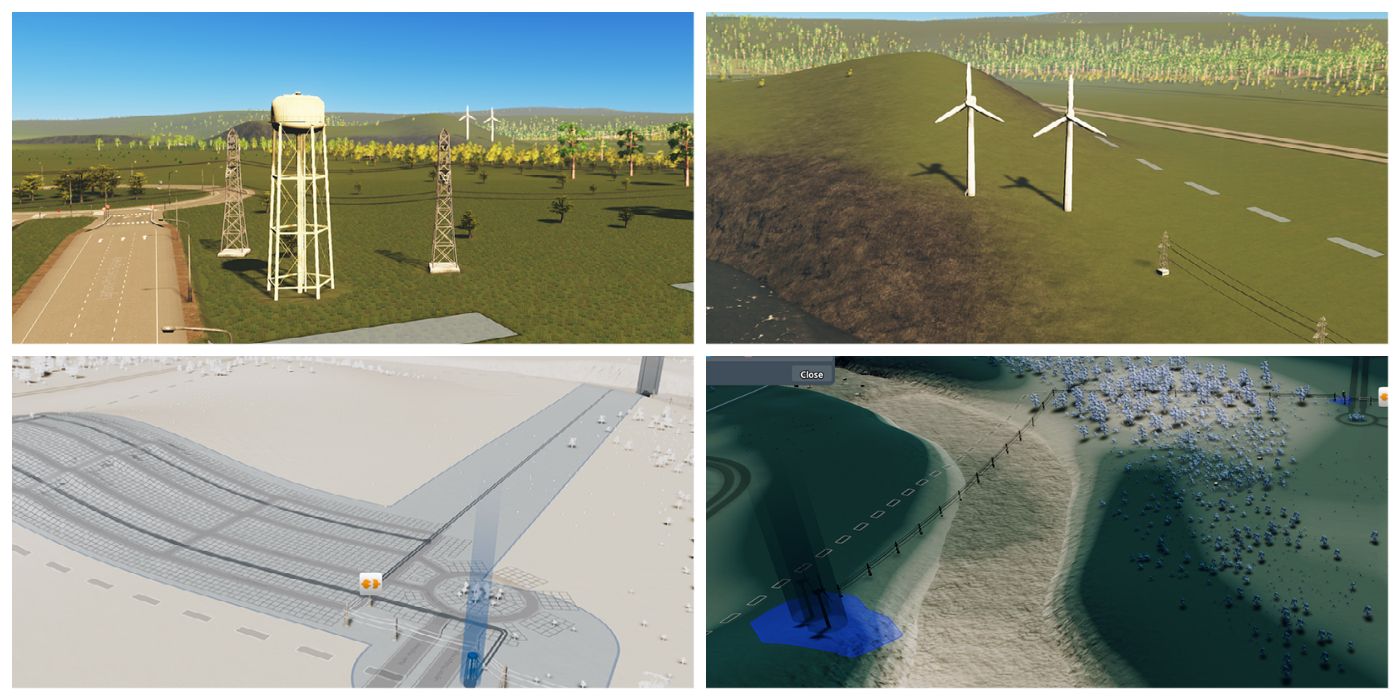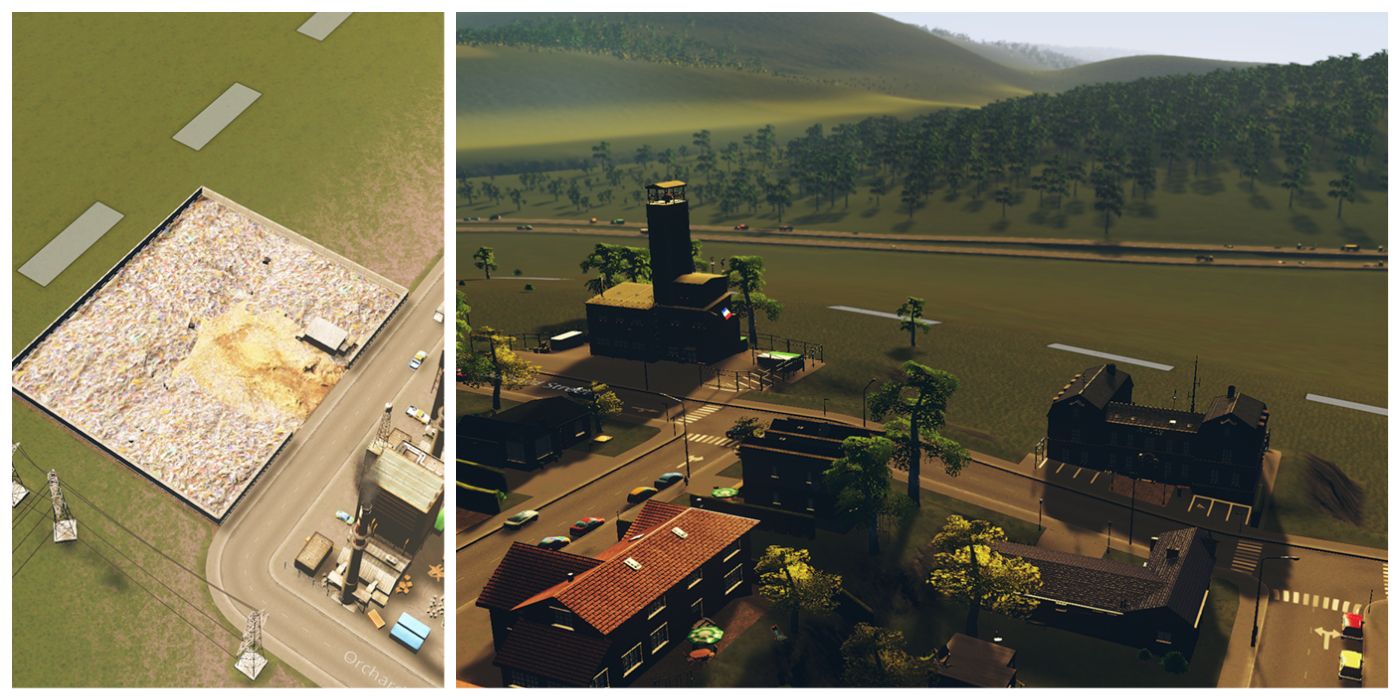
City simulators can be an intimidating genre for any gamer, and Cities: Skylines is no exception. One of the trickiest parts for beginners is making a city that will survive the first month. First, select a map that is relatively open and flat and has access to a river. These are typically the better maps to work with, and having a moving current helps dispose of sewage later in the game.
RELATED: Best Games Like Cities: Skylines
The first thing any beginner should do before they start building is pause time in the game. This maneuver allows you to go at your own pace and not worry about maintenance costs eating away at your limited cash. Now that you're all set up, it's time to start making a prosperous and beautiful city.
Think About Water And Power

The first thing you should think about is how the water and power will be laid out. You're going to want to begin with the cheapest sources, which are water towers and windmills. Here are some tips:
- You can place Water Towers anywhere, but it's best to keep them close to where the power lines come into the city, so they have immediate access to power.
- You'll also need a sewage drain that empties into a body of water, and is connected to a power source.
- The last thing you'll need to do is lay some water pipelines in the area you plan to construct the first section of your city.
- For windmills, you'll want to place them on higher elevations to get the most megawatts out of them. Then you'll draw a power line from the windmills to your first section of the city.
Build Roads And Think About The Traffic

Every city needs roads to exist, and you'll want to ensure that your roads maximize density and ensure proper traffic flow. The first thing you'll want to do with your roads is to create a grid pattern.
First, create a 1 x 3 block, then repeat until you create a 3 x 3 grid of blocks. This spacing and size should give you more than enough space for your city to start.
Second, you'll want to create a traffic circle (or roundabout if you prefer) that connects your grid to the highway.
RELATED: Cities: Skylines: The Best DLCs You Can Get Today
A traffic circle will allow for a clean flow of traffic in and out of the city and won't immediately become congested like an intersection. Also, be sure to create a one-way road into your grid and a one-way road out, as this will ensure proper traffic flow around the roundabout.
Partition The Residential, Commercial, And Industrial Districts

The last thing you need to do before unpausing your game and allowing your city to run is to partition the residential, commercial, and industrial districts.
As the image above captures, the best method is to create about three blocks of residential districts, then three split commercial/residential blocks, and finally three industrial blocks.
It's important to note that your power lines should connect to the residential portion of your city because this is the first area that develops when you unpause.
Tip: Put your commercial districts between your residential and industrial blocks as a buffer zone, which will prevent citizens from making noise complaints and encountering other health mishaps.
Build An Elementary School And A Medical Clinic

The two things you need to purchase to grow your city are an Elementary School and a Medical Clinic. These buildings should be placed in a central location between where you are and where you plan to expand your city next.
A well-educated and healthy population is the backbone of city growth. As you continue to grow your city, ensure that you meet the demand of your citizens by continuing to build these facilities in newer neighborhoods.
Expansion: Taking Out Your First Loan And The Art Of Growing Slowly

Speaking of expansion now is the time to start, and what better way to do so than by taking out a loan. Loans are a great resource to spur development, but keep in mind that they will slightly impact your revenue. Growing slow is the key to success in Cities: Skylines. This increased development has its own set of costs, and not just financially.
RELATED: Cities: Skylines: Essential Quality Of Life Mods
To properly grow your city, ensure that you have enough electricity to handle more buildings. Another smart move is to double-check your water supply, although it should be fine at this point. As the image above conveys, you'll want to add another six blocks to your grid. Partition five out of the six blocks for residential use and set one aside for commercial.
Build A Landfill, Police Station, And A Fire Station

By this point, it's not uncommon to see garbage icons appearing above some buildings, and by now, you should have unlocked the landfill amenity. Place the Landfill near the industrial district because your citizens do not want to live by a trash pile.
When you unlock the Landfill, you also unlock the Police and Fire Stations. So you will want to build those as well. Place the Police and Fire Stations in spots that give them the most coverage.
Build According To Demand

The one rule you should follow in Cities: Skylines is to build slowly. Taking this rule to heart, it's always important to check in on the demand meter at the bottom right of your screen. This meter will indicate which areas of the city you should develop next.
RELATED: Best City Building Games Of All Time
It's vital to your success not to over-develop, but keep a plan in mind for how you'll expand each area in the future. As you grow your city, ensure that you have enough amenities to sustain your growing population.
Upgrade According To Demand/Use Info Views

Equally important in expanding and developing a bigger city is going back and upgrading older sections of the city.
Using the info view button and selecting different lenses like traffic or education will give you an idea of how your city handles its increased population. With this data in hand, upgrade amenities as needed and ensure that your population is happy.
Build A High School And Parks

As you grow, you'll unlock more and more amenities, including high schools and parks. The former will increase the education level of your city and thus the quality of jobs available to them and your overall tax revenue. The latter will ensure that your city is happy and entertained, and it will also increase the land value of those neighborhoods.
Keep Growing, Build New Stuff, And Remember To Grow Slow

As you continue to build your city, your income will exponentially grow, which will allow you to build more complex facilities like stadiums.
As you grow, keep tabs on your water and electricity supply.
You can elect to build coal or oil plants or keep your city green with more advanced wind turbines. The benefit of green energy is that it won't create as much pollution, but wind turbines can expensive when compared to matching the price per watt of a coal plant.
Another option is cleaner water treatment plants that won't destroy your rivers and oceans as quickly. Plus, you can buy more land to expand your city. The options are limitless. Just follow the principle of growing slowly, and you will be fine.
NEXT: Simulation Games On Xbox Game Pass You Have To Try


